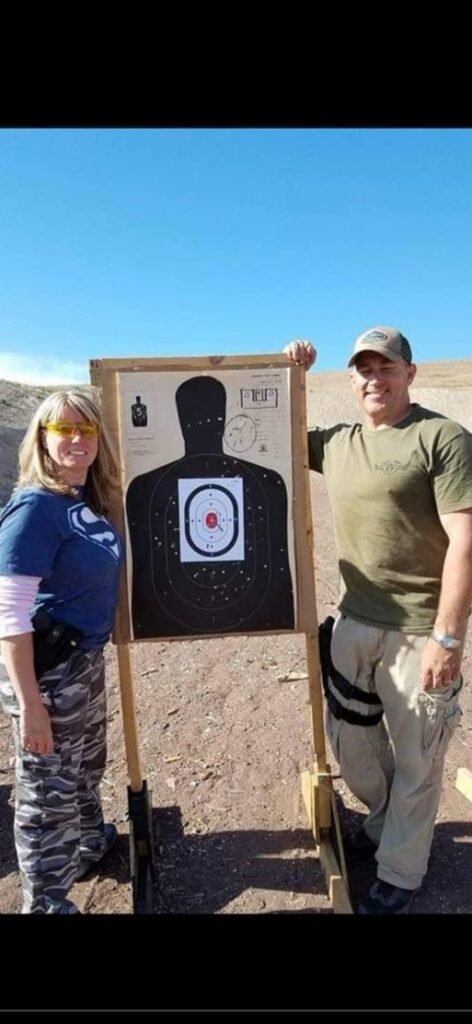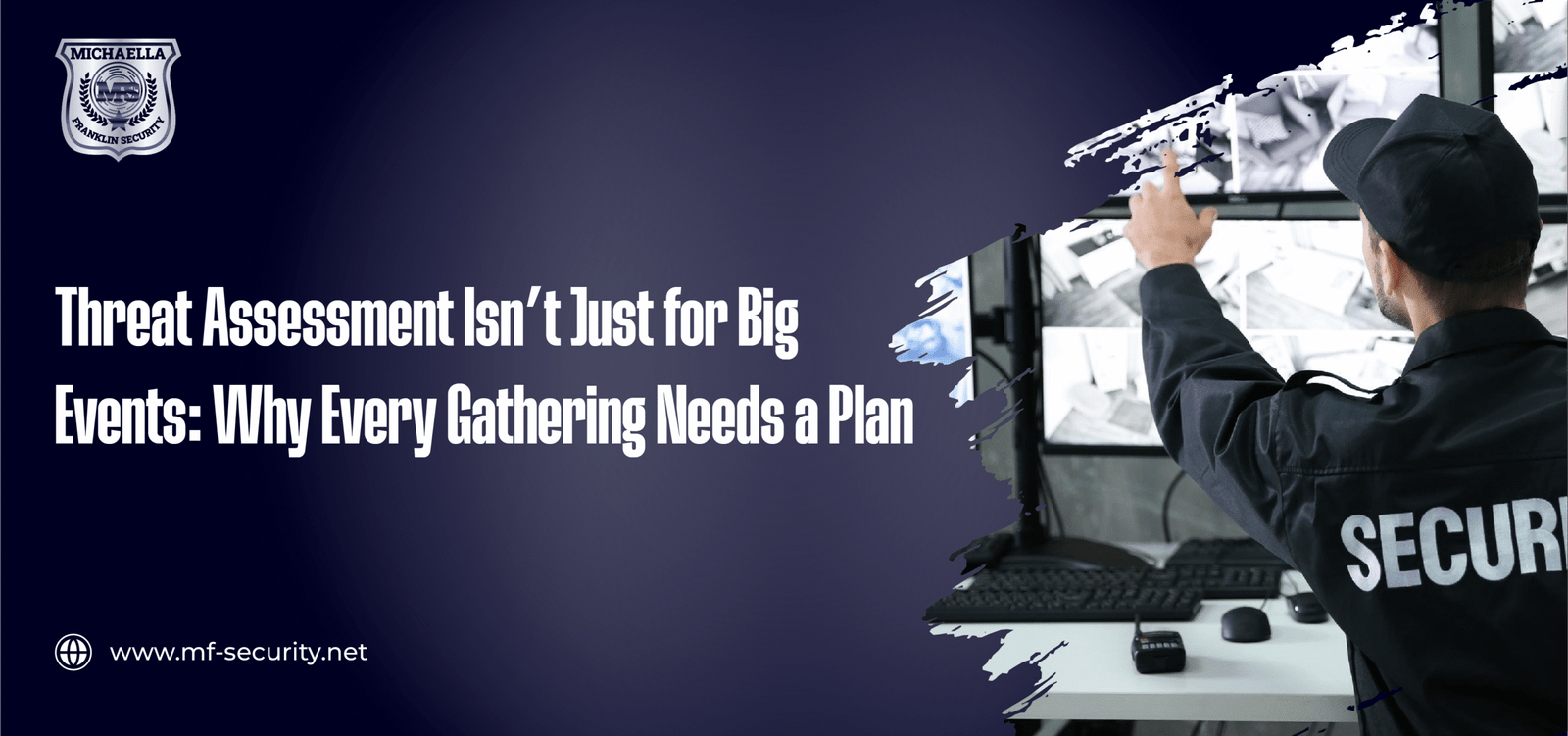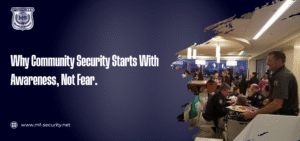It’s common for people to associate threat assessment with enormous sports arenas, rallies attended by large crowds, or major political meetings. To be honest, every event, whether small or large, should be planned with safety in mind. Structuring a threat assessment for even a church service, a charity event, or a school talent show can help keep the celebration safe, rather than creating chaos.
At Michaella Franklin Security Inc, we believe that keeping you safe is not just an extra benefit, but absolutely necessary. Our nonprofit teams, which provide security in Idaho, help event organizers of every size plan suitable and realistic safety procedures.
Understanding Threat Assessment
A threat assessment is a proactive process used to identify potential risks before they occur. It involves:
- Site inspection
- Guest profile evaluation
- Entry/exit flow planning
- Emergency access points
- Environmental conditions
- Crowd dynamics and potential hazards
Professionally executed, it becomes the blueprint for event safety, helping security teams, volunteers, and venue staff operate in sync.
Plan Your Event’s Safety with Expert Threat Assessments
Ensure your gathering is secure with our professional threat assessment and incident management services tailored for Idaho events.
Why Smaller Events Need It Too
Many small-scale event planners assume risk is low. “It’s just a school fundraiser,” or “only 100 guests are expected.” But threat is not measured by crowd size—it’s measured by:
- Vulnerable populations (children, the elderly, VIPs)
- Open public access
- Controversial topics or speakers
- Event duration or location
Even a single agitated guest or unanticipated medical emergency can cause disruption. Without a threat assessment, small gatherings are often underprepared and overexposed.
Common Overlooked Risks at Local Events
- Entry points that lack monitoring allow anyone to gain access.
- No emergency plan available for medical ones or evacuations.
- Since there is no communication system, staff and volunteers can’t let security know about issues.
- Parking lots have areas that are not visible, and this leads to cars and pedestrians going unmonitored.
- In Idaho’s unpredictable weather, being unprepared for weather changes can be a big problem for such gatherings.
- When there is no flow system, the risk of crowding increases dangerously.
- No proper security around the perimeter can prevent unauthorized individuals from entering surreptitiously.
- Open vendor areas: Spots where essential goods or food are exposed.
- Special zones for children, usually referred to as play areas, require close supervision and should not be accessible to all adults.
A well-structured assessment accounts for these and more, creating actionable procedures, not overwhelming.
The Planning Process: What to Expect

When our team conducts a threat assessment, it’s not just about writing a checklist. It includes:
- Walking the site well in advance
- Mapping high-risk zones
- Collaborating with venue staff
- Creating incident protocols and evacuation plans
- Training event staff or volunteers on response roles
- Reviewing prior event reports or neighborhood incidents
- Understanding lighting, signage, and visibility challenges
By using clear visuals and walkthroughs, we help clients visualize and implement the plan effectively.
Integrating with Local Authorities
Threat assessments are even more effective when coordinated with law enforcement, fire departments, and EMS.
Our team provides local responders with:
- Maps and contact lists
- On-site security roles
- Emergency access protocols
This shared information ensures faster, more confident responses if an incident occurs.
Adapting to Each Event Type
Each event has a different set of needs depending on its audience, layout, and goals. For example:
- A church service may require discreet exit coverage and usher coordination.
- A school dance may need roaming patrols and crowd flow control.
- A charity gala might need layered protection with front-door monitoring.
- A local farmer’s market may benefit from perimeter control and visible security.
- A community parade often requires route protection and coordination with traffic management.
- A youth sports tournament could involve parking lot management and volunteer supervision.
No matter the setting, every plan we develop is designed to utilize your resources effectively, not overwhelm them.
The Confidence Factor
Guests, sponsors, and speakers feel safer when they know a plan is in place. Even subtle signals, like visible staff communication or uniformed officers near key exits, convey readiness.
More than safety, threat planning also shows professionalism. It tells your community: “We’re not just throwing an event. We’re protecting it.”
Our Role: Proactive, Not Just Protective
Michaella Franklin Security Inc doesn’t just show up the day of. We:
- Review your site in advance
- Coordinate with vendors and volunteers
- Offer threat profiles and traffic plans
- Remain available for post-event feedback
- Provide coordination documents that summarize who does what and when
- Assist with onsite briefings and communications protocols
That’s why our threat assessments are trusted by schools, churches, nonprofits, and municipalities throughout the region.
📌 Learn more about our planning and coordination approach
Educating Your Team
A threat assessment is only as strong as the team implementing it. That’s why we also offer:
- Pre-event briefings for your volunteers and staff
- Role assignment and what-if scenario training
- Guidelines on guest conflict, medical alerts, and reporting
- Tips for staying calm, visible, and professional under pressure
- Training on recognizing behavioral red flags and escalation patterns
Even small efforts to inform your team can lead to quicker response and greater safety.
Real-Time Incident Management\

One of the most critical outcomes of any effective threat assessment is having the right plan for incident response. We don’t just identify risks—we help you respond to them when they occur. Our incident response teams are trained to handle:
- Guest conflicts
- Medical emergencies
- Suspicious behavior
- Unauthorized access
- Crowd disturbances
We follow a proven process of isolate, respond, de-escalate, and report to ensure every incident is resolved swiftly and professionally.
Post-Event Review and Continuous Improvement
The work doesn’t stop when your event ends. Our team conducts post-event reviews to:
- Evaluate the effectiveness of threat mitigation strategies
- Collect incident reports
- Update your event security protocol based on real-world feedback
This proactive analysis enables us to fine-tune our support, ensuring your next event is even safer.
Don’t Wait for a Crisis to Create a Plan
Doing threat assessment is not a result of anxiety; it focuses on helping prepare us. Nothing is gained by waiting until you manage thousands to focus on safety. You only need to identify your weaknesses and have someone available to address them.
We can work with you to develop a plan that looks after your guests, moves forward your mission, and prevents problems at your event.
Ready to protect your next event? Visit our Book Now page to schedule a threat assessment and safety planning consultation.





